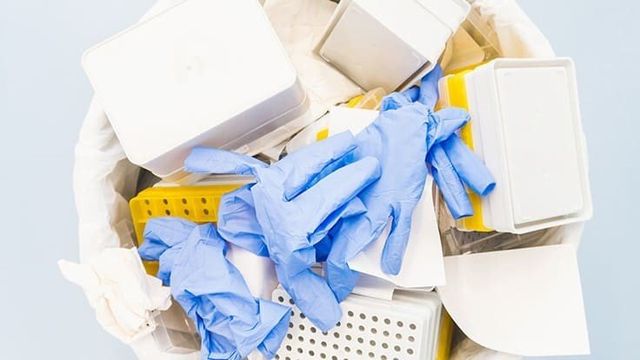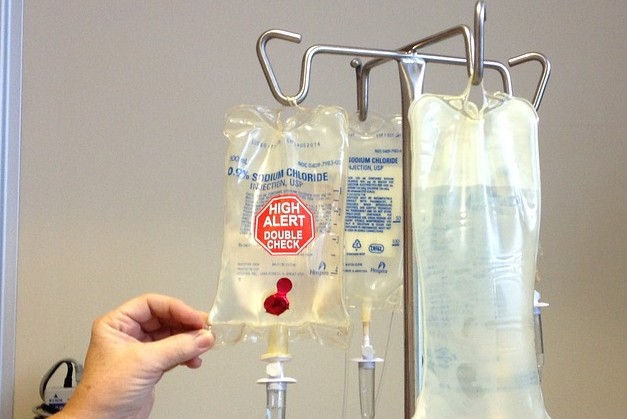Safety and security First: Your Overview to Accountable Medical Waste Removal Services
Effective and Eco-friendly Medical Garbage Disposal Solutions
In the ever-evolving area of healthcare, the issue of clinical garbage disposal remains a topic of vital importance. As health centers, centers, and various other medical care centers make every effort to offer quality individual treatment, they have to also attend to the obstacle of successfully and properly disposing of their waste - medical waste removal. In an era where environmental sustainability goes to the forefront of public consciousness, finding solutions that are both reliable and eco-friendly is not only a matter of compliance but likewise a testament to the commitment of healthcare establishments towards a greener future. From waste segregation techniques to ingenious reusing campaigns, this discussion will certainly explore the numerous strategies utilized to tackle this pressing problem, leaving you interested and excited to check out the potential options that lie ahead.
Waste Segregation Practices
Reliable waste segregation techniques are important to guarantee the correct and secure disposal of medical waste. Medical waste, that includes materials contaminated with potentially infectious substances, should be handled in a means that lessens the threat of harm to both public health and the atmosphere. Correct waste segregation plays a crucial function in accomplishing this objective.
Waste partition entails the separation of various kinds of waste based upon their features and potential risks. This process guarantees that each sort of waste is treated and disposed of appropriately (medical waste disposal services with WasteX). It starts at the point of generation, where healthcare centers need to have designated bins and containers for different waste classifications, such as sharps, contagious waste, pharmaceutical waste, and non-hazardous waste
By setting apart clinical waste at the source, doctor can stop cross-contamination and minimize the risk of exposure to transmittable agents. This practice also promotes the recycling and recuperation of certain materials. For example, segregating and reusing tidy plastics and glass decreases the need for resources and lessens the environmental effect of clinical garbage disposal.

Autoclaving and Sanitation Strategies
In order to ensure the secure and correct disposal of medical waste following effective waste segregation practices, healthcare centers should utilize autoclaving and sterilization techniques. Autoclaving is an extensively made use of technique that utilizes high-pressure steam to disinfect medical waste.
This includes dealing with the waste with chemicals such as ethylene oxide or hydrogen peroxide, which kill microbes by disrupting their mobile framework. It is crucial to note that chemical sterilization needs correct handling and disposal of the chemicals used, as they can be hazardous to human health and wellness and the environment if not managed correctly.
On-Site Waste Treatment Solutions
Healthcare centers have applied on-site waste treatment systems to resolve the disposal of clinical waste in a effective and risk-free fashion. These systems offer a practical and economical solution for handling medical waste generated within the center. On-site waste treatment systems use different modern technologies to dispose and treat of medical waste on-site, decreasing the requirement for transport to off-site centers.
One typically used on-site waste therapy system is the microwave technology. This technology uses microwave energy to disinfect and sanitize clinical waste, minimizing its quantity and rendering it risk-free for disposal. One more system is the chemical disinfection modern technology, which includes treating medical waste with chemicals to kill virus and reduce its dangerous nature. This technique is particularly effective for fluid medical waste.
They eliminate the risk of clinical waste being mishandled throughout transportation, lowering the potential for contamination and direct exposure to harmful substances. On-site treatment systems reduce the overall ecological effect of medical waste by minimizing transportation and the requirement for land fill space.
Recycling and Repurposing Campaigns
As medical care centers pursue sustainable waste monitoring techniques, they are progressively exploring recycling and repurposing efforts as a way of lowering the ecological impact of medical waste. Recycling and repurposing efforts involve discovering cutting-edge methods to recycle or transform clinical waste right into brand-new items or products. This not only aids to reduce the quantity of waste that winds up in burners or land fills but likewise decreases the intake of resources and power needed for manufacturing new products.
One example of reusing in the medical care field is the reprocessing of single-use medical gadgets. These devices, such as surgical instruments or catheters, are usually thrown out after a single usage. However, developments in innovation and stringent sterilization procedures have made it feasible to securely tidy, decontaminate, and reuse these tools several times. This not only reduces the quantity of waste generated yet also saves medical care facilities substantial costs connected with purchasing new tools.
Another recycling effort entails the recycling of plastic containers, such as drug bottles or syringe housings. These containers can be gathered, arranged, and sent out to reusing centers where they are processed, melted down, and transformed into new plastic items. This aids to preserve sources and reduce the demand for virgin plastic production.
Along with recycling, repurposing initiatives involve discovering alternate usages for clinical waste. For instance, shredded paper waste from clinical documents or product packaging products can be repurposed as bed linens product for pets or as insulation product (medical waste removal near me). Natural waste such as food scraps from medical care centers can be composted and utilized as plant food in gardens or agricultural fields.

Renewable Resource Solutions
One reliable technique to mitigating the ecological influence of healthcare procedures includes carrying out sustainable energy solutions. Medical care centers, such as health centers and facilities, consume substantial amounts of energy for numerous functions, including lights, home heating, cooling, and running clinical equipment. By transitioning to renewable resource sources, these his comment is here centers can considerably reduce their carbon impact and add to an extra sustainable future.

Carrying out renewable resource solutions Read More Here in healthcare facilities not only minimizes greenhouse gas exhausts yet additionally offers long-term price savings. While the first investment in renewable energy facilities might be greater, the lasting functional prices of renewable power systems are significantly lower compared to traditional fossil fuel-based energy resources. Additionally, renewable resource systems are reliable and can supply a steady and nonstop power supply, guaranteeing continual health care solutions even throughout power outages or emergencies.
Verdict
To conclude, implementing efficient and eco pleasant clinical garbage disposal options is vital for preserving a lasting medical care system. By taking on waste partition methods, autoclaving and sterilization strategies, on-site waste therapy systems, recycling and repurposing campaigns, and renewable resource solutions, medical care centers can dramatically lower their ecological impact. These measures not only protect the setting yet additionally advertise public health and wellness and safety. It is crucial for medical care organizations to focus on the application of these lasting waste disposal methods.
It begins at the factor of generation, where healthcare facilities must have marked containers and containers for different waste classifications, such as sharps, contagious waste, pharmaceutical waste, and non-hazardous waste.
In order to make sure the proper Continued and risk-free disposal of clinical waste adhering to effective waste segregation practices, health care centers have to use autoclaving and sterilization techniques.Health care facilities have actually applied on-site waste treatment systems to address the disposal of medical waste in a risk-free and effective way. On-site waste therapy systems use numerous modern technologies to get rid of and deal with of clinical waste on-site, lessening the demand for transport to off-site centers.
As health care facilities aim for sustainable waste management practices, they are increasingly exploring recycling and repurposing initiatives as a means of reducing the ecological influence of clinical waste. - medical waste removal